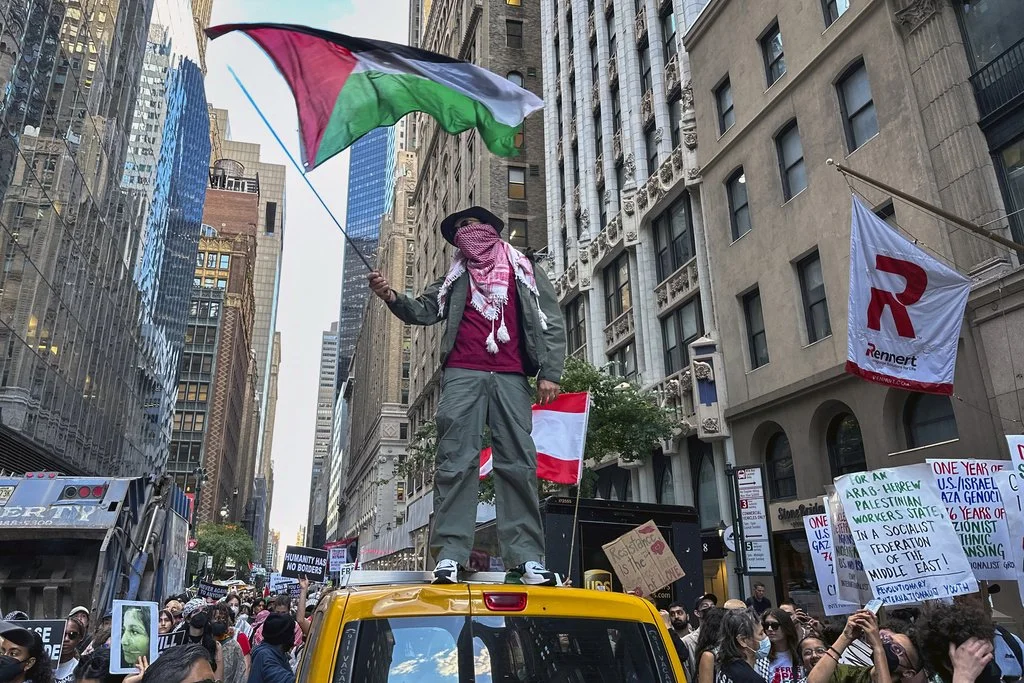Analysis: Israel Marks One Year Since Oct. 7 Hamas Attack — Larger Implications
Israelis protest on the one-year anniversary of the Hamas attack and call for the release of hostages outside Prime Minister Benjamin Netanyahu's house in Jerusalem, Oct. 7, 2024. (Photo: AP Photo/Mahmoud Illean)
On Oct. 7, the Islamist militant and political organization, Hamas, bombed and infiltrated Israeli settlements along the Gaza Strip, killing about 1,200 people and taking 250 hostage in an attack that would severely intensify the ongoing Israeli-Palestinian conflict.
Before Oct. 7, the year 2023 was marked by significant internal divisions over proposed judicial reforms in Israel. The political landscape was heated, characterized by large-scale demonstrations and a stark divide between Israelis who supported the reforms as a means to limit judicial overreach and those who viewed them as a threat to democracy. After Oct. 7, Israel shifted its attention to responding to the attack in the country’s south by Hamas militants from the blockaded Gaza Strip.
For a year, the Israeli government has used the Oct. 7 attack as justification for attacks on Gaza causing thousands of civilian deaths and devastating Palestinian infrastructure and economy. Israel’s military campaign killed a reported 41,615 Palestinians in the past year, approximately 16,756 of those casualties being children — though many bodies beneath wreckage have been left unidentified.
On Oct. 7, 2024, a year after the attacks, Israeli settlers are still questioning their government’s conduct, particularly the amount of authority exercised regarding the conflict in Gaza, reflecting divisions still left unresolved from earlier last year. Thousands of Israelis took to the streets to demand a ceasefire in Gaza, following the killing of six Israeli hostages, to free the hostages being held by Hamas.
Critics of Prime Minister Benjamin Netanyahu’s government contend that the focus should be on securing a ceasefire-for-hostages deal with Hamas, rather than engaging in a new conflict with Hezbollah in the north.
Pro-Palestinian demonstrators march through the streets of Manhattan, acknowledging the one year mark of conflict in Gaza. (Photo: AP Photo/Ted Shaffrey)
Israel has carried out airstrikes and deployed ground troops into Gaza during conflicts in 2008 and 2014. Hamas – founded during the first intifada in 1987 – declares that their attacks are a response to repeated injustices committed by Israel against the Palestinian people. These grievances include security raids on Islam’s third holiest site, the Al-Aqsa Mosque located in occupied East Jerusalem, as well as ongoing influx of Jewish settlements in the West Bank.
Additionally, Hamas seeks the release of thousands of Palestinian prisoners held in Israel and the lifting of the blockade on the Gaza Strip, imposed by both Israel and Egypt under the basis of maintaining security.
Hamas’s actions are often linked to broader regional dynamics, including its support from Iran and its consequent association with other Iran-backed militant groups like Hezbollah. This web of alliances opposed to Israel can lead to significant escalations in the region, impacting both local and international stability.
The recent one-year anniversary of the Gaza conflict sheds light on the far-reaching effects and reactions towards regional issues.
On Monday, thousands of people gathered on the streets of New York City to protest the continued conflict in Gaza. For both pro-Palestinian and pro-Israeli supporters, the one-year anniversary invokes deeper emotions in demonstrators, particularly those who feel that the conflict intersects with their personal and collective identity.
As discussions about a ceasefire continue, international affairs and the role of the international community uphold critical roles in shaping public opinion and the future of the Middle East.


